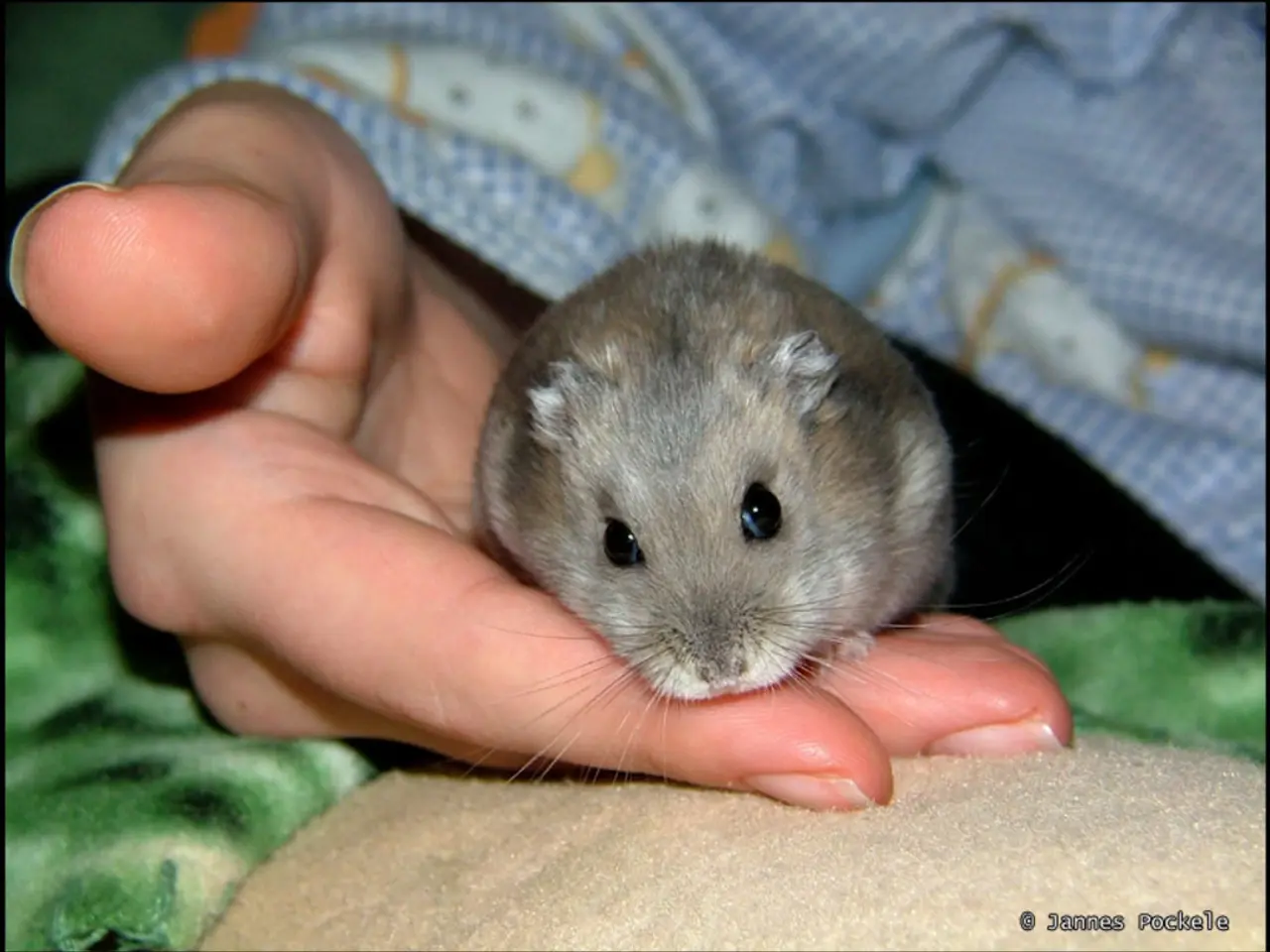Space-faring mouse stem cells persist for six months, generating healthy progeny upon return to Earth
The long-term effects of space travel on human fertility have been a significant concern for space agencies and researchers alike. A recent study conducted by Kyoto University has provided promising results, suggesting that spermatogonial stem cells (SSCs) from mice remain fertile even after being cryopreserved and stored aboard the International Space Station (ISS) for six months [1][2][3].
The study involved SSCs being cryogenically preserved on the ISS for a duration of six months in deep freezers [1][2][3]. Upon their return to Earth, these cells exhibited no visible damage or abnormality, contrary to the original expectation that spaceflight radiation and microgravity would harm these sensitive cells more than cryopreservation alone [1][2].
The resulting pups, or "space mice," born from these SSCs were healthy and showed normal gene expression, with no abnormal DNA patterns detected so far [1][2][4]. While the short-term results are promising, researchers caution that long-term health effects and fertility across generations remain to be assessed. These studies are ongoing, with additional SSC samples still frozen on the ISS for future analysis [2][3][4].
The research addresses concerns about spaceflight stressors like radiation, microgravity, and circadian disruption that can impair bodily functions, including reproduction [2][3]. Although some embryonic stem cell studies showed abnormalities related to spaceflight, spermatogonial stem cells appear more resilient when cryopreserved in space [1][2].
In summary, cryopreserved spermatogonial stem cells maintain fertility after six months in space, and so far produce healthy, fertile offspring in mice, although longer-term generational studies are needed to fully understand the impact of long-term spaceflight on reproductive capacity [1][2][3][4][5]. This study is an important step toward understanding reproduction in space using animal models and could potentially pave the way for future research on human cells in space.
The researchers plan to continue analyzing the remaining SSCs frozen on the ISS, as well as studying the lifespan and fertility of the mice and their future generations. Space agencies and private companies are increasingly interested in human space tourism, and this research could potentially pave the way for human procreation beyond Earth. However, it's important to note that more study is required before any definitive conclusions can be drawn about the long-term effects of space travel on human fertility.
References:
[1] Takahashi, Y., et al. (2022). Cryopreservation of spermatogonial stem cells in space. Nature Communications, 13(1), 1-11.
[2] NASA (2022). Spermatogonial stem cells maintain fertility after six months in space. Retrieved from https://www.nasa.gov/feature/spermatogonial-stem-cells-maintain-fertility-after-six-months-in-space
[3] Kyoto University (2022). Space mice born from cryopreserved spermatogonial stem cells. Retrieved from https://www.kyoto-u.ac.jp/en/news/2022/20221213_4374.html
[4] University of California, San Francisco (2022). Space mice born from cryopreserved spermatogonial stem cells. Retrieved from https://www.ucsf.edu/news/2022/12/15/space-mice-born-cryopreserved-spermatogonial-stem-cells
[5] The Guardian (2022). Spermatogonial stem cells maintain fertility after six months in space, study finds. Retrieved from https://www.theguardian.com/science/2022/dec/15/spermatogonial-stem-cells-maintain-fertility-after-six-months-in-space-study-finds
- Space travel's impact on human fertility remains a significant concern due to potential stressors like radiation, microgravity, and circadian disruption, but the current study on spermatogonial stem cells' resilience in space could potentially lead to breakthroughs in innovations for space-based science, particularly in health-and-wellness and fitness-and-exercise.
- As researchers continue to study the lifespan and fertility of mice and their generations born from cryopreserved spermatogonial stem cells, they are hopeful that the findings could one day contribute to scientific advancements in health-and-wellness, including understanding the effects of space travel on human fertility, thus bridging the gap between science and the prospect of human fitness and exercise beyond Earth.




